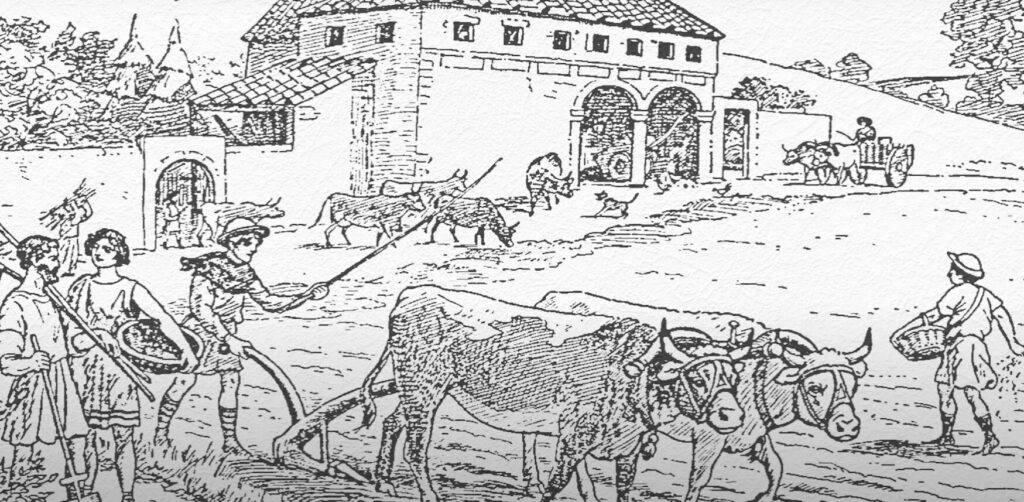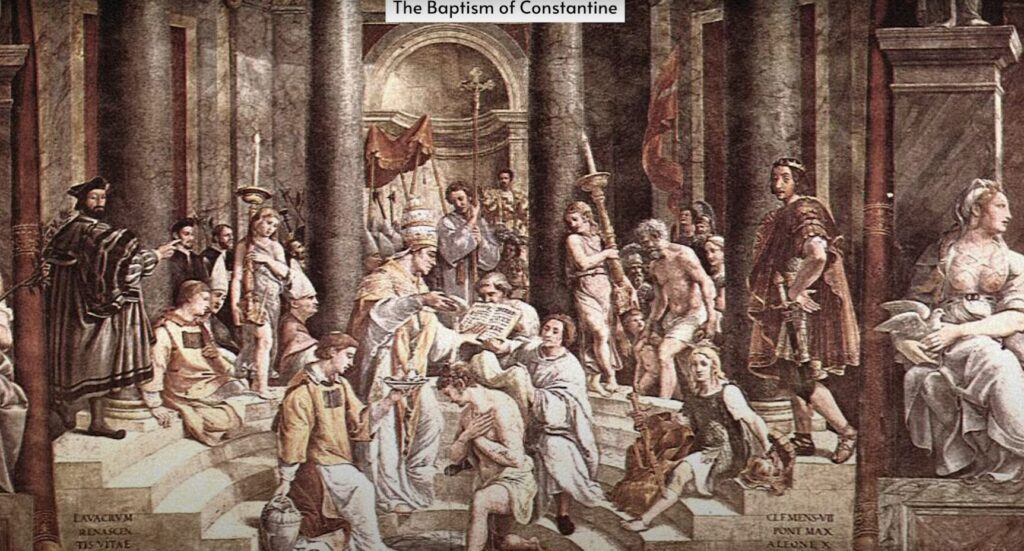In the late second century, Christians were a small group within the Roman Empire, making up less than one percent of the population. This changed rapidly over the next two centuries, especially after Constantine’s conversion and his support for Christianity. His policies and those of later emperors helped Christianity grow and become the main religion, while efforts to end pagan practices grew stronger.
Despite official bans and the destruction of temples, old religious traditions did not disappear overnight. Many rural areas and remote villages kept their old beliefs long after cities had converted. Pieces of these ancient customs still appear today, seen in festivals, everyday language, and reused temple buildings.
Key Takeaways
- The spread of Christianity changed religious life in the Roman Empire.
- Many traditional beliefs continued in rural and remote areas for centuries.
- Greco-Roman traditions still influence culture and daily life today.
Growth of Christianity Across Roman Society
Early Christian Groups Before Emperor Constantine
At the end of the second century, Christians were a very small minority—less than one percent of people in the Roman Empire. Their communities were most common in the cities of the eastern provinces, especially where Greek was spoken. Even in this period, large cities like Rome and some parts of North Africa and Gaul had Christian groups, but most villages and rural areas stayed loyal to the older gods. Early Christian writers said miracles and acts of martyrdom helped gain followers and support, especially when persecution was strong.
Quick Facts:
- Christians mostly lived in cities
- Rural areas remained mostly non-Christian
- Miracles and martyrdom drew some people to the new faith
Effects of Constantine’s Embrace of Christianity
The situation began to change after Emperor Constantine converted to Christianity. When he ordered his soldiers to use Christian symbols in battle, it marked the beginning of state support for the religion. Throughout his rule, Constantine passed laws that favored Christians, such as removing legal penalties against them and giving special privileges to church leaders. He also built large churches and called the first big church meeting to decide important issues. With Constantine taking these actions, Christianity started to grow much faster and gain influence.
Key Actions by Constantine:
| Action | Impact on Christianity |
|---|---|
| Removed legal penalties | Christians gained equal rights |
| Privileges for clergy | Church leaders became important |
| Built monumental churches | Public presence of Christianity |
| Called church council | Unified Christian beliefs |
Spread and Changes During the Fourth Century
The fourth century saw a sharp rise in the number of Christians. Laws were passed to close temples of the traditional gods and to limit or ban old religious practices. Many temples were attacked by groups of monks, leading to their destruction. As the Christian population grew, cities became more Christian, but the countryside changed much more slowly. Some old beliefs and traditions lasted for centuries, especially in remote or rural places. By this time, the majority of people in the cities followed Christianity, and the empire became known as a Christian state.
Main Trends:
- Temples and sacrifices were restricted or banned
- Monks sometimes destroyed temples
- Old beliefs remained strongest in rural areas
- Christianity became the main religion in most cities
Example Changes:
- Pagan festivals continued for a while but faded over time
- Some old temples were turned into churches
- Pagan statues and symbols were sometimes adapted for Christian use
Imperial Actions Against Pagan Beliefs

Temple Closures and Laws Against Old Religions
In the fourth century, Roman leaders began passing new laws against the old pagan faiths. Temples in many places were shut down. Offering sacrifices became illegal. Public pagan ceremonies were banned by imperial decree.
| Policy | Effect |
|---|---|
| Temple closures | Ended public pagan worship |
| Ban on sacrifices | Stopped traditional rituals |
| Legal restrictions | Made paganism punishable |
These measures aimed to make Christianity the only religion allowed by the state.
Attacks and Destruction of Pagan Sites
Groups loyal to the new faith sometimes raided pagan temples. Many of these attacks were carried out by wandering monks and mobs. They smashed statues, looted treasures, and in some cases destroyed the buildings. These events happened in several cities across the Roman Empire.
- Statues and shrines were damaged or taken away.
- Temple sites were sometimes repurposed for Christian use.
- Some temples became churches.
This period saw a shift of public spaces from pagan traditions to Christian customs.
Justinian’s Last Push Against Traditional Worship
During Emperor Justinian’s reign, the crackdown on paganism reached its highest point. He closed the few temples that remained open. Justinian made it mandatory for any pagans left to be baptized.
One final act under his rule was the public burning of pagan texts and god statues in Constantinople’s Hippodrome. This was meant as a clear message that the time for the old gods had ended.
Ongoing Pagan Traditions in Countryside and Isolated Regions
Religious Divide Between Urban and Rural Places
Christianity first took root in cities, especially in the Greek-speaking east, while most rural communities held on to older religious practices. Many country areas spoke different languages than those in cities, making it harder for Christian leaders to spread their message outside urban centers. This divide meant the countryside stayed mostly pagan long after cities converted.
| Area | Popular Religion | Notes |
|---|---|---|
| Cities | Christianity | Grew fast after Constantine |
| Countryside | Paganism | Lasted many centuries longer |
Attempts at Conversion and Local Pushback
Missionaries tried many ways to convert rural pagans. Sometimes they destroyed temples or held public events to promote Christianity. Even so, many villagers stuck with their old beliefs. There are records of officials and monks complaining that people in some regions kept their traditions or even bribed local leaders to ignore pagan rituals. Some gave up hope of converting certain groups, like the country people of Sardinia.
Main forms of resistance:
- Continuing pagan rituals in secret
- Paying off leaders for religious freedom
- Ignoring or avoiding Christian teachings
Strongholds of Ancient Worship in the Eastern Provinces
Some towns in the Near East stayed pagan much longer than elsewhere. For example, Haran kept worshiping a mix of ancient gods, even after most areas had switched to Christianity. The people of Haran became known for their loyalty to these gods, keeping their temple open until the 11th century. Other areas, like the hills of Asia Minor, also had large groups of people still practicing paganism many centuries after the official end of the old religions.
Changes and Lasting Effects of Pagan Traditions

Adapting Temples for New Worship
Many pagan temples did not vanish right away. Some large temples, like the Parthenon and the Pantheon, became Christian churches. In Athens, a church of Saint Andrew was even placed right inside an old sanctuary dedicated to a healing god. Sometimes, people used parts of old temples, such as healing springs, and simply dedicated them to Christian saints or angels.
Old Statues, New Meanings
Ancient statues were not always destroyed or thrown away. In some villages, people honored statues from old pagan sites as Christian saints instead. For example, a statue of Demeter near Athens became known as Saint Dimitra, and villagers believed it helped protect their crops. This practice continued until modern times in some places.
Pagan Festivals That Continued
A few old festivals lasted long after Christianity spread. The Lupercalia festival in Rome, once held with dramatic rituals, survived to the end of the 5th century. The Mayumis festival, known for its lively shows and bold activities, kept going for even longer in the East. Over time, church leaders tried to remove pagan elements, but some traditions still remained.
Everyday Life and Pagan Reminders
Pagan customs did not disappear all at once. In the countryside, some villagers kept their traditions for centuries. Even now, traces of the old beliefs are easy to find. For example:
- Days of the week are named after ancient gods.
- Pagan stories still appear in art and books.
These lasting marks show how pagan practices blended into daily life, long after the religion itself faded away.
Lasting Influence of Ancient Greco-Roman Religion
Traces of Paganism in Visual Arts and Stories
Greco-Roman religion still shapes art and literature today. Many ancient temples, like the Parthenon and the Pantheon, were reused as Christian churches. Old statues of gods were sometimes kept and even honored under new names. For instance, villagers near Athens once prayed to a statue of Demeter as Saint Dimitra, trusting it to protect their crops.
Ancient stories, ideas, and images of gods often show up in books and artwork. Writers and artists continue to use symbols, themes, and characters from the old myths. List of examples:
- Gods in paintings and sculpture
- References to myths in modern novels
- Pagan symbols used in architecture
Old Customs and Symbols in Daily Life
Some ancient religious traditions lasted long after most people became Christian. Certain festivals continued for centuries, such as Rome’s Lupercalia and the Maiouma celebrations in the East. Even after changes by church leaders, pieces of these old events survived.
Pagan customs are still seen in everyday things. For example:
| Pagan Element | Modern Use |
|---|---|
| Days of the week named after Roman gods | Monday, Tuesday, etc. |
| Temples turned into churches | Parthenon, Pantheon |
| Sacred springs and sites | Became holy places for saints |
| Statues repurposed as saints | Saint Dimitra from Demeter |
These examples show how Greco-Roman religion left a mark that lasted far beyond its time as a living faith. Many symbols, traditions, and ideas remain part of culture even now.
